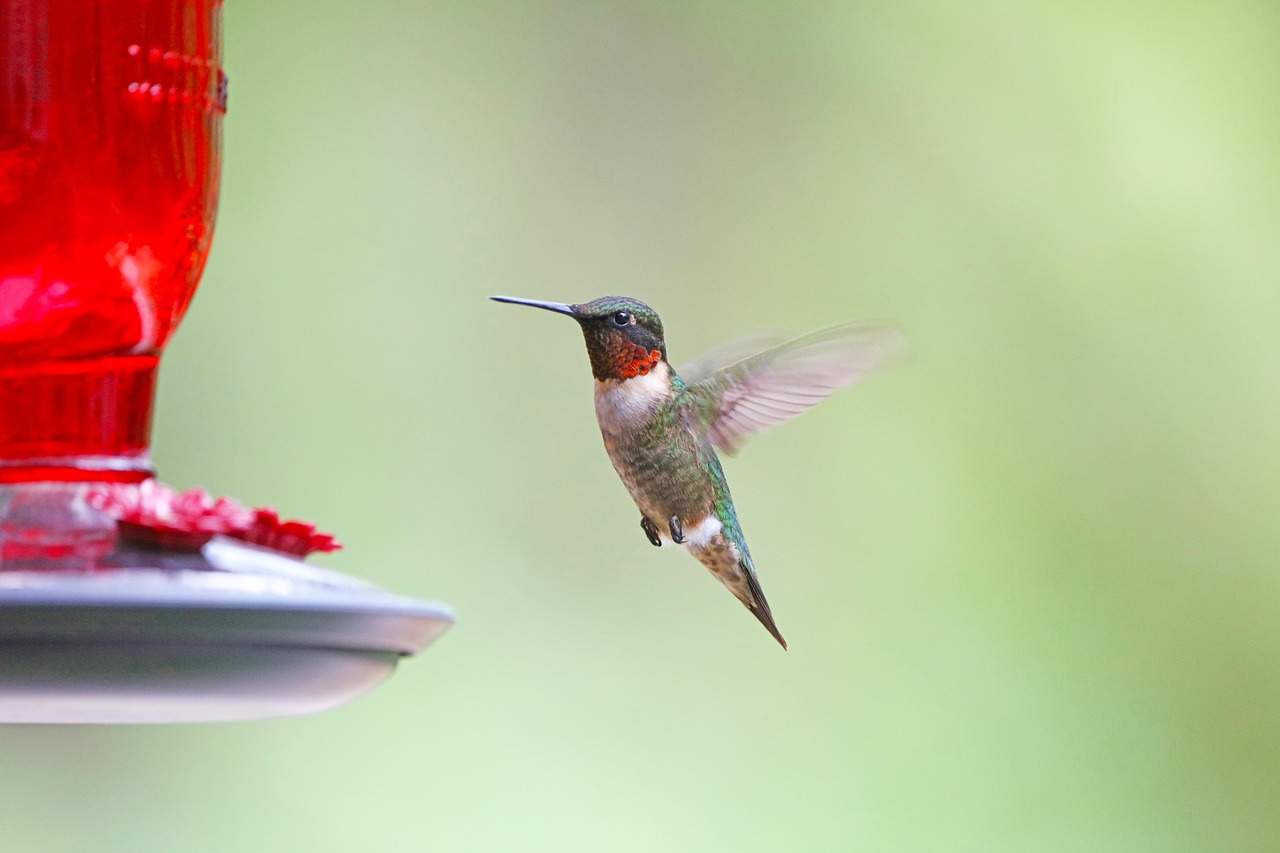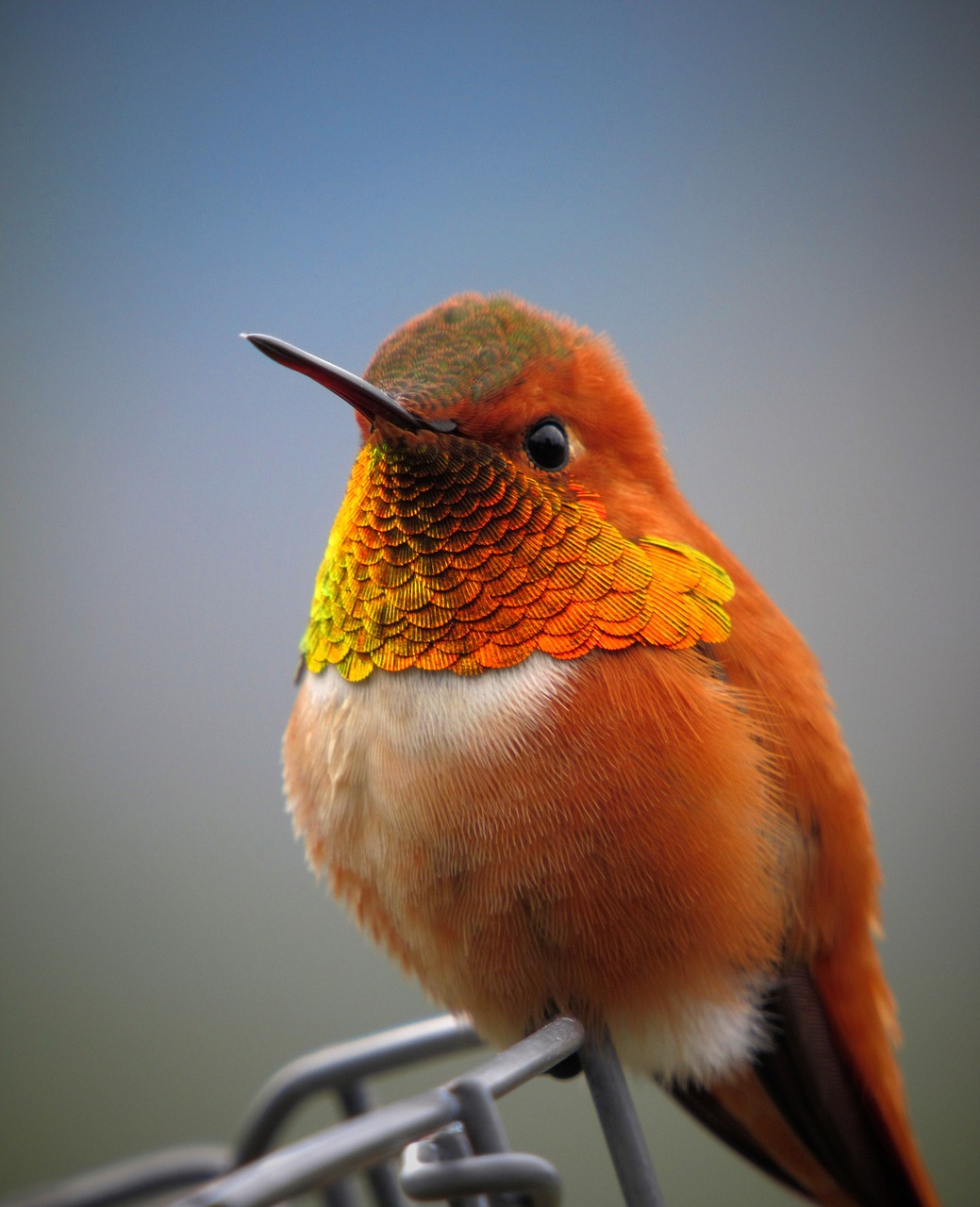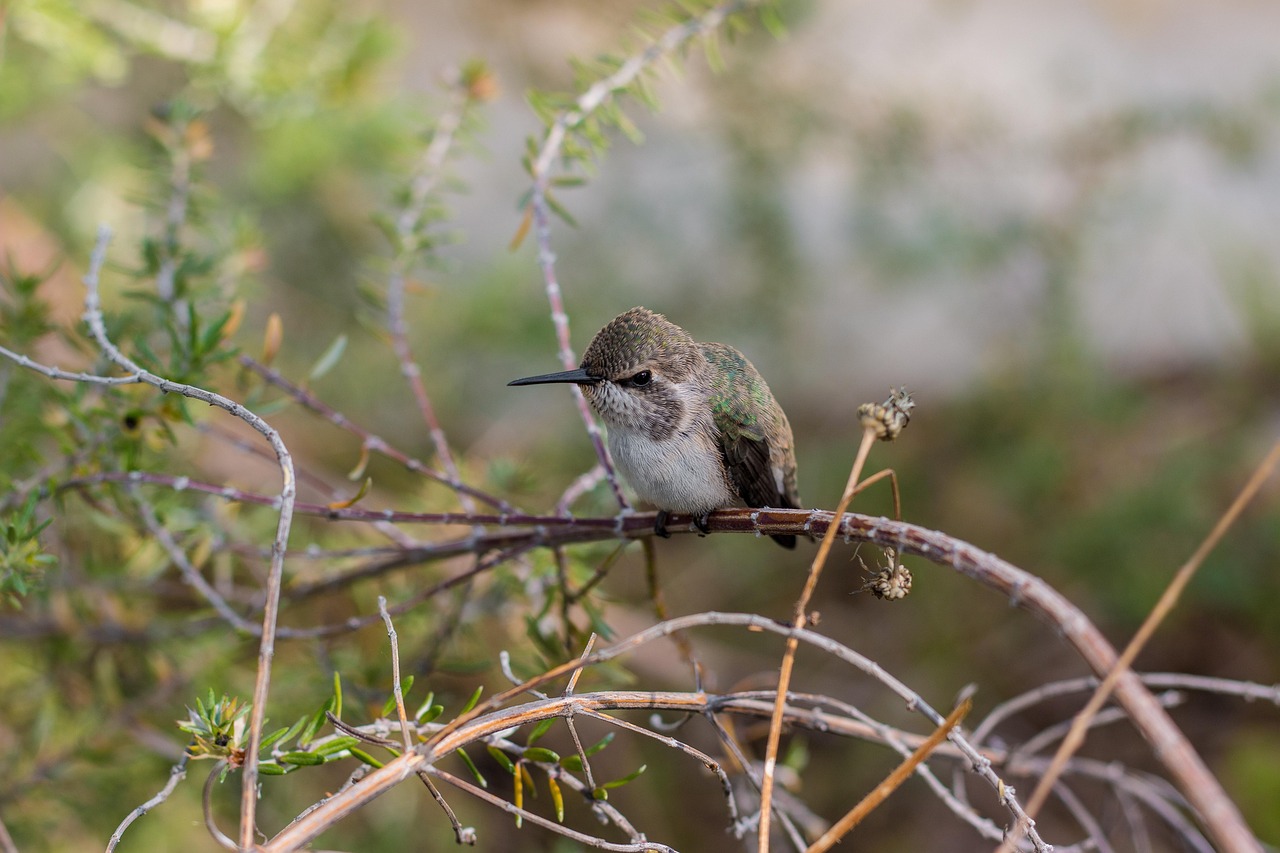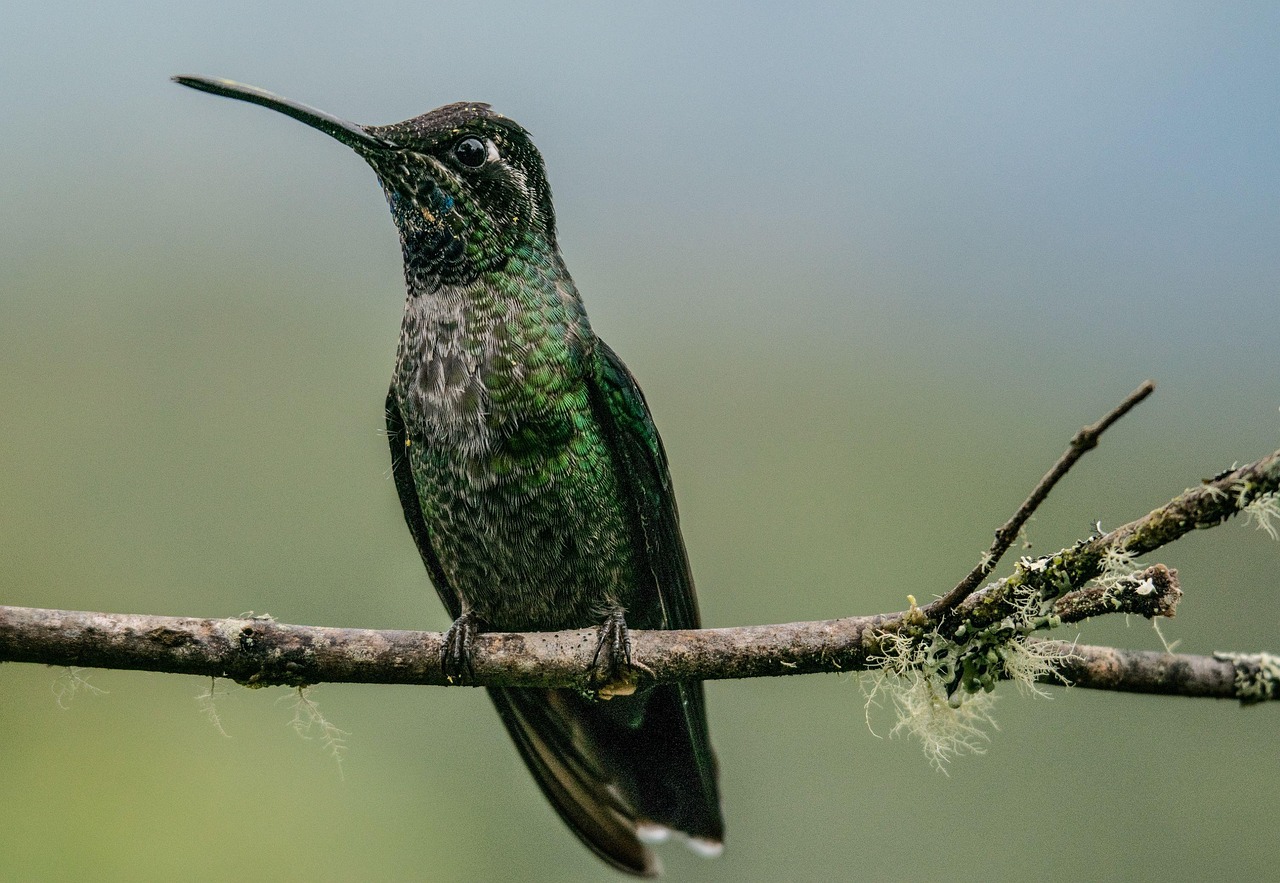Hummingbirds exhibit unique sleeping behaviors, often roosting in dense foliage or sheltered areas. They enter a state of torpor during the night, significantly slowing their metabolic rate to conserve energy. This adaptation allows them to survive periods of rest without food, making their roosting habits crucial for their survival.
Understanding Hummingbird Sleeping Behavior

Hummingbirds, known for their vibrant colors and rapid wing beats, are fascinating creatures. Their sleeping behavior is as intriguing as their daytime activity. These small birds typically sleep at night, but their method of resting differs significantly from many other avian species. One of the most notable aspects of their sleep is the phenomenon known as torpor.
Torpor is a state of reduced physiological activity. During torpor, a hummingbird’s heart rate can drop from over 1,200 beats per minute to as low as 50 beats per minute. This drastic reduction helps them conserve energy, which is essential for survival, especially when food sources are scarce. The ability to enter this state is a remarkable adaptation that allows them to cope with their high-energy lifestyles.
Roosting Habits
Hummingbirds prefer to roost in safe, concealed locations that provide protection from predators and harsh weather conditions. They often choose sites that are dense with foliage, such as:
- Branches of shrubs and trees
- Thick vines
- Underneath large leaves
- Man-made structures like eaves or hanging plants
The choice of roosting location is critical. It not only provides safety but also minimizes exposure to cold temperatures during the night. Some species may even return to the same roosting spot night after night, establishing a routine that adds to their sense of security.
Preferred Locations for Roosting
The specific locations hummingbirds select for roosting can vary based on their species and environmental factors. Generally, they prefer areas that offer immediate access to food sources in the morning. Below is a table highlighting some common species of hummingbirds and their preferred roosting locations:
| Hummingbird Species | Preferred Roosting Location |
|---|---|
| Ruby-throated Hummingbird | Dense shrubbery or tree branches |
| Anna’s Hummingbird | Near flowering plants or under eaves |
| Black-chinned Hummingbird | Thick underbrush or vine-covered areas |
| Calliope Hummingbird | Conifer trees or dense foliage |
The table illustrates how different species have adapted their roosting habits to suit their environments. Understanding these preferences helps bird watchers and enthusiasts appreciate the ecological needs of hummingbirds more deeply.
The Importance of Roosting
Roosting is essential for hummingbirds not only for rest but also for regulating their body temperature. By roosting in sheltered locations, they can maintain warmth during chilly nights. This energy conservation strategy is vital since they rely heavily on nectar and insects for sustenance during the day.
In summary, the sleeping behavior and roosting habits of hummingbirds reveal much about their adaptations to survive in diverse environments. Their unique approach to rest plays a significant role in their overall well-being and survival strategies.
Factors Influencing Hummingbird Roosting Behavior
Several factors influence the roosting behavior of hummingbirds. These include environmental conditions, availability of food sources, and potential threats from predators. Understanding these aspects can provide deeper insights into their adaptability and survival strategies.
Environmental Conditions
The natural habitat of hummingbirds plays a critical role in determining their roosting sites. Various environmental conditions affect their choice, including:
- Temperature: Hummingbirds are sensitive to temperature changes. During colder months, they seek warmer roosting spots to maintain their body heat.
- Humidity: High humidity levels can lead to cooler nighttime temperatures. Hummingbirds may choose denser foliage to shield themselves from moisture and cold.
- Weather Patterns: Storms and high winds can influence where hummingbirds decide to roost. They often look for more sheltered locations during adverse weather.
Availability of Food Sources
The proximity of food sources significantly impacts the roosting choices of hummingbirds. Being energy-efficient is essential for these small birds. They prefer roosting locations that are close to flowering plants or feeders that provide nectar. The following points illustrate this connection:
- Daytime Feeding: Hummingbirds expend a lot of energy during the day foraging for food. Roosting near food sources allows them to quickly refuel in the morning.
- Nectar Availability: Certain flowers bloom at various times of the year. Hummingbirds adapt their roosting habits based on seasonal food availability.
- Insect Populations: Insects are a vital protein source for hummingbirds. Roosting near areas with abundant insect life helps them meet their dietary needs.
Predation and Safety
Predators are a constant threat to hummingbirds, especially during their vulnerable sleeping hours. As a result, safety plays a major role in their roosting behavior. Some considerations include:
- Cover from Predators: Hummingbirds often choose roosting spots that provide ample cover from larger birds and other potential threats.
- Height of Roost: Higher roosting locations can offer safety from ground-dwelling predators.
- Visibility: While they need cover, hummingbirds also prefer locations that allow them to observe their surroundings for potential dangers.
The Role of Torpor in Sleeping Behavior
Torpor is not just a method of conserving energy; it is a vital part of a hummingbird’s sleeping behavior. This physiological state provides numerous benefits, which include:
- Energy Conservation: By entering torpor, hummingbirds can significantly reduce their metabolic rate, allowing them to survive longer without food.
- Survival During Food Scarcity: Torpor enables hummingbirds to endure periods when food is less accessible, ensuring they can survive until conditions improve.
- Adaptation to Temperature Fluctuations: During cold nights, torpor helps maintain body temperature, providing protection against hypothermia.
Duration and Depth of Torpor
The duration and depth of torpor can vary among species and individual circumstances. Factors influencing these variations include:
- Species-Specific Traits: Different species exhibit different torpor patterns based on their ecological needs and adaptations.
- Time of Year: Seasonal changes can affect the duration of torpor, with longer periods occurring during colder months.
- Health Status: A hummingbird’s overall health and energy reserves can influence how deeply they enter torpor.
Understanding these factors provides a comprehensive view of how hummingbirds adapt their sleeping behaviors in response to their environment and biological needs.
Behavioral Adaptations for Sleeping
Hummingbirds have developed various behavioral adaptations that enhance their sleeping patterns and roosting habits. These adaptations help them manage their energy efficiently, avoid predators, and ensure optimal rest during the night.

Social Interactions During Roosting
While hummingbirds are often solitary creatures, they sometimes exhibit social behaviors around roosting. These interactions can influence their choice of roosting sites and overall sleeping behavior. Some key points include:
- Group Roosting: In certain circumstances, hummingbirds may roost in groups, especially in areas with abundant food sources. This behavior can provide added safety from predators.
- Territorial Behavior: Male hummingbirds are known to be territorial. They may defend their roosting area aggressively to ensure access to nearby feeding sites, impacting the roosting choices of other birds.
- Communication: Hummingbirds use vocalizations and physical displays to communicate during their roosting times, which can strengthen social bonds and establish hierarchies.
Roosting Strategies in Urban Environments
As urbanization increases, hummingbirds have adapted their roosting habits to thrive in urban settings. This adaptation poses unique challenges and opportunities:
- Utilization of Man-Made Structures: Hummingbirds often find shelter in garden structures, balconies, and even street lamps. They may choose these locations for safety and proximity to food sources.
- Feeding on Ornamental Plants: Many urban gardens feature flowers that attract hummingbirds. These plants provide essential food sources close to potential roosting sites.
- Adapting to Noise and Light: Urban hummingbirds learn to navigate the challenges posed by noise pollution and artificial lighting, which can affect their sleep patterns and preferences for roosting locations.
Seasonal Changes and Their Impact on Roosting

The changing seasons bring significant variations in roosting behavior among hummingbirds. These changes can be attributed to shifts in temperature, food availability, and migratory patterns.
Winter Roosting Behavior
During the winter months, many hummingbird species alter their roosting habits considerably. Key factors influencing winter behavior include:
- Migration Patterns: Some species migrate to warmer climates during winter. Those that remain adapt by seeking more sheltered roosting areas to conserve heat.
- Food Scarcity: With fewer flowering plants available, hummingbirds may need to travel further distances to find food, affecting their roosting choices.
- Increased Torpor Duration: To cope with colder temperatures and reduced food sources, hummingbirds may enter a deeper state of torpor for extended periods during the winter.
Spring and Summer Roosting Behavior
As temperatures rise in spring and summer, hummingbirds display different roosting behaviors. These changes reflect the abundance of food and warmer nights:
- Increased Activity: Hummingbirds become more active as they feed extensively on nectar and insects, leading to less time spent in torpor.
- Expanded Roosting Options: With many flowering plants blooming, there are more roosting sites available that are close to food sources.
- Nesting Behavior: Spring also marks the beginning of nesting season. Female hummingbirds may choose roosting sites that are nearby their nests, ensuring safety for their young while feeding.
The Importance of Habitat Conservation
The conservation of hummingbird habitats is crucial for maintaining healthy populations of these remarkable birds. As their natural environments are threatened by development and climate change, understanding their roosting behaviors can help inform conservation efforts. Key points include:
- Pertaining to Shelter: It is essential to preserve areas with dense foliage that provide adequate shelter for roosting.
- Nectar Sources: Planting native flowering plants can support local hummingbird populations by ensuring a consistent food supply throughout the seasons.
- Creating Safe Spaces: Reducing pesticide use and encouraging organic gardening practices can create safer environments for hummingbirds, allowing them to thrive.
The ongoing study of hummingbird sleeping behavior and roosting habits can contribute significantly to the preservation of these beautiful creatures and their habitats.
Challenges Facing Hummingbirds

Despite their remarkable adaptability, hummingbirds face numerous challenges that threaten their populations and habitats. Understanding these threats is vital for effective conservation efforts. Some of the major challenges include:
- Habitat Loss: Urban development, agriculture, and deforestation significantly reduce the natural habitats of hummingbirds. As they lose their roosting and feeding sites, their survival becomes increasingly difficult.
- Climate Change: Changes in climate patterns can lead to altered flowering times of plants, which affects the availability of nectar. Additionally, extreme weather events can disrupt their nesting and roosting habits.
- Pesticides and Chemicals: The use of pesticides in gardens and agricultural areas can poison hummingbirds directly or reduce the insect populations they rely on for protein.
Community Involvement in Conservation
Community involvement is crucial for the conservation of hummingbirds. Individuals can play a significant role in creating supportive environments for these birds. Here are some actions that communities can take:
- Creating Hummingbird-Friendly Gardens: Planting native flowering plants that bloom at different times throughout the year can provide a continuous food source for hummingbirds.
- Installing Feeders: Providing nectar feeders can help support local hummingbird populations, especially during migration seasons when natural food sources may be scarce.
- Educating Others: Sharing knowledge about hummingbird conservation can inspire others to take part in protecting these remarkable birds and their habitats.
The Role of Research and Monitoring
Ongoing research and monitoring are essential to understanding hummingbird populations and their behaviors. Scientists study various aspects, such as migration patterns, breeding success, and habitat preferences. This research provides valuable data that can inform conservation strategies. Some key areas of focus include:
- Migration Studies: Tracking migration routes helps identify critical habitats that need protection during specific times of the year.
- Population Assessments: Monitoring population trends allows researchers to identify declines and potential threats, prompting timely conservation actions.
- Behavioral Research: Studying the sleeping and feeding behaviors of hummingbirds deepens our understanding of their needs and adaptability.
Final Thoughts
The sleeping behavior, roosting habits, and locations of hummingbirds paint a fascinating picture of these delicate yet resilient creatures. Their unique adaptations allow them to thrive in varied environments, but they are not without challenges. From habitat loss to climate change, multiple threats jeopardize their survival.
Conservation efforts must focus on preserving their habitats, promoting community involvement, and supporting research initiatives. By understanding the intricacies of hummingbird behavior and the factors influencing their lives, we can take meaningful steps toward ensuring their continued existence.
In conclusion, hummingbirds are not just beautiful additions to our gardens; they play a critical role in our ecosystems as pollinators. Protecting them is not only beneficial for their species but also for the health of our environment as a whole. With careful observation, dedicated action, and a commitment to conservation, we can contribute to the survival of these remarkable birds for generations to come.
